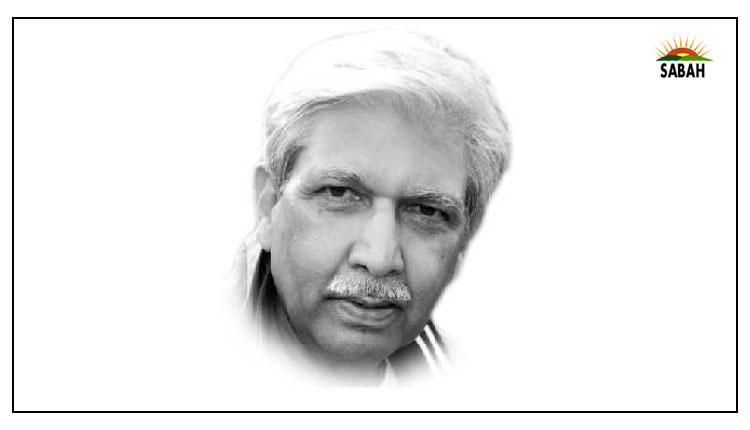How high is the Sino-Pak friendship? ….. Shahzad Chaudhry
The question has been posed frequently in the last some weeks and found favour in the Indian media for obvious reasons. The two principals in Pakistan’s power equation, the prime minister and the army chief, were both in China recently where they held numerous meetings with China’s top leadership. The prime minister visited for an unprecedented five days. China’s minister for International Department followed up with a Joint Consultative Meeting in which the two sides discussed the progress on CPEC, the corridor to economic and infrastructure development between China and Pakistan. That doesn’t seem like a souring relationship between two iron brothers. But there have been problems which have needed attention at this level of engagement. CPEC has not yet matured beyond an infrastructural undertaking and the real fruit — the special economic zones which would bring the desperately needed industry and jobs, and thus exports and the FE — has lain unattended with not even perfunctory progress.
The reasons mostly pertain to capacities within Pakistan to give these projects the right attention and spare finances required to put in place the necessary infrastructure. From political disharmony to a decaying ability to transmit power, to producing lesser and lesser electricity — power consumption in Pakistan is reducing at the rate of 12 per cent per annum — to an international and IMF concern of Pakistan being drowned in debt, mostly Chinese, have literally paralysed decision making which could have moved the needle forward. China calls CPEC its flagship programme in the Silk Road project aimed at expanding its reach and influence as well as resource its critical needs from the Middle East and adjoining Eurasian region. A suspended or a slowed CPEC threatens the entire edifice of China’s future strategy. China should be genuinely concerned.
Pakistan owes around 130 billion USD in debt to the outside world. This is one-third of its gross GDP. Of this she owes 68 billion USD or more to China. CPEC constitutes 62 billion of those, of which approximately 35 billion has already been utilised on infrastructure and roads, etc. Economic activity meant to generate jobs and returns hasn’t yet begun. IMF which is the lender of the last resort, and a Washington monopoly, wishes Pakistan to work the debt out with China before it should lend more to Pakistan and be the saviour that Pakistan looks to for greater credibility as an investment destination. The PM and the army chief were in Beijing to request exactly such reprieve through debt rescheduling. It is unlikely they will get it. The Chinese instead may proffer more loan to retire the debt which falls due keeping the fidelity of their financial system intact even when they help a proclaimed friend from an impending bankruptcy. More loans add to the debt burden kicking the can further down the road.
Strategically, the US would like to minimise China’s influence and ingress in Pakistan. In the worst case it shall hope to coexist with equal if not greater influence with Pakistan’s power circles. This conundrum will challenge Pakistan’s leadership inevitably becoming acute with time. Unless of course Pakistan changes paradigm of its engagement with the world at large and is seen to be a strategically and economically productive partner than a liability keeping afloat through debt dependence. Else, it will surely be dispensed away by one or both without much consequence to their interests. At serious cost, of course, to Pakistan.
Pakistan’s lament with China is deeper. Previous governments finalised power-plant deals with Chinese companies which inducted retiring plants on coal but with a promised dual-cycle modifications. Even when completed those have continued to produce expensive electricity with adverse fuel efficiency. Expensive electricity has only meant dearer power to the consumers which when unpaid has built an insurmountable circular debt. The contracts envisage capacity charges in USDs to power producers even when they do not produce any power because of the inability of Distribution Companies to pay for it.
Electric power in Pakistan today is oversubscribed. With a standing capacity touching 50000 MW it can only transmit and use 25000 MW. A combination of its inability to finance power and make it available to consumers at affordable rates means there are long hours of forced outages to domestic and industrial consumers. All attempts by Pakistan to renegotiate the power contracts to more tolerable levels have turned a blank. China’s government backed consortiums would not budge. The cross has become just too big to carry. Other than debt it is the bankruptcy of the energy sector which has the making of taking the entire economy down with no way out of this debilitation.
The US has a minor stake in the power mix but what they have is decidedly more efficient with a reduced carbon footprint. They will however commit only so much to investing with Pakistan. Pakistan needs to trapeze between these two variables and yet retain its balance. It will only get more difficult with time. Strategic dimensions of peace and security in the region and economic interests, however, will keep Pakistan engaged with the US for the foreseeable future. China too will remain intrinsic to Pakistan’s long and short-term interests on similar grounds. To choose between the two, however, is neither probable nor possible. For the moment China understands this vulnerability well to not insist on a clear demarcation in this binary. Ditto the US. Pakistan will be lucky if these two principals of Pakistan’s policy remain as rationally supportive of its needs and limitations.
China has three principal complaints of Pakistan. One, it is disappointed and dissatisfied with the state of security in the areas where Chinese nationals work. Many have been abducted and killed in terrorist acts. China wants Pakistan to ensure foolproof security before any meaningful work is resumed. That has spurred another look and another promise within the security apparatus to expand the counter-terrorism effort, as it must be. Second, Pakistan has failed at developing its own sources and arrangements to provide and prepare the infrastructure in the special economic zones to make them functional. China is thus unable to relocate its retiring industry in Pakistan to spur growth and help Pakistan create jobs and the FE it desperately needs. And thirdly, a barely floating economy is the least attractive for any investor to place his money in with any assurance. Especially, when most local industry is moving out because of unsustainability.
Chinese attach greatest importance to symbols in their dealings with other nations. When they call their relationship with Pakistan as sacred as Mount Tai — the most sacred of the five peaks in China — that may seem lowering the scale from the 29000 feet Himalayan peak to just five thousand feet of sacred height. Yet sacred it is. Why would it not be with so much at stake. For how long is the question.
Courtesy Express Tribune












